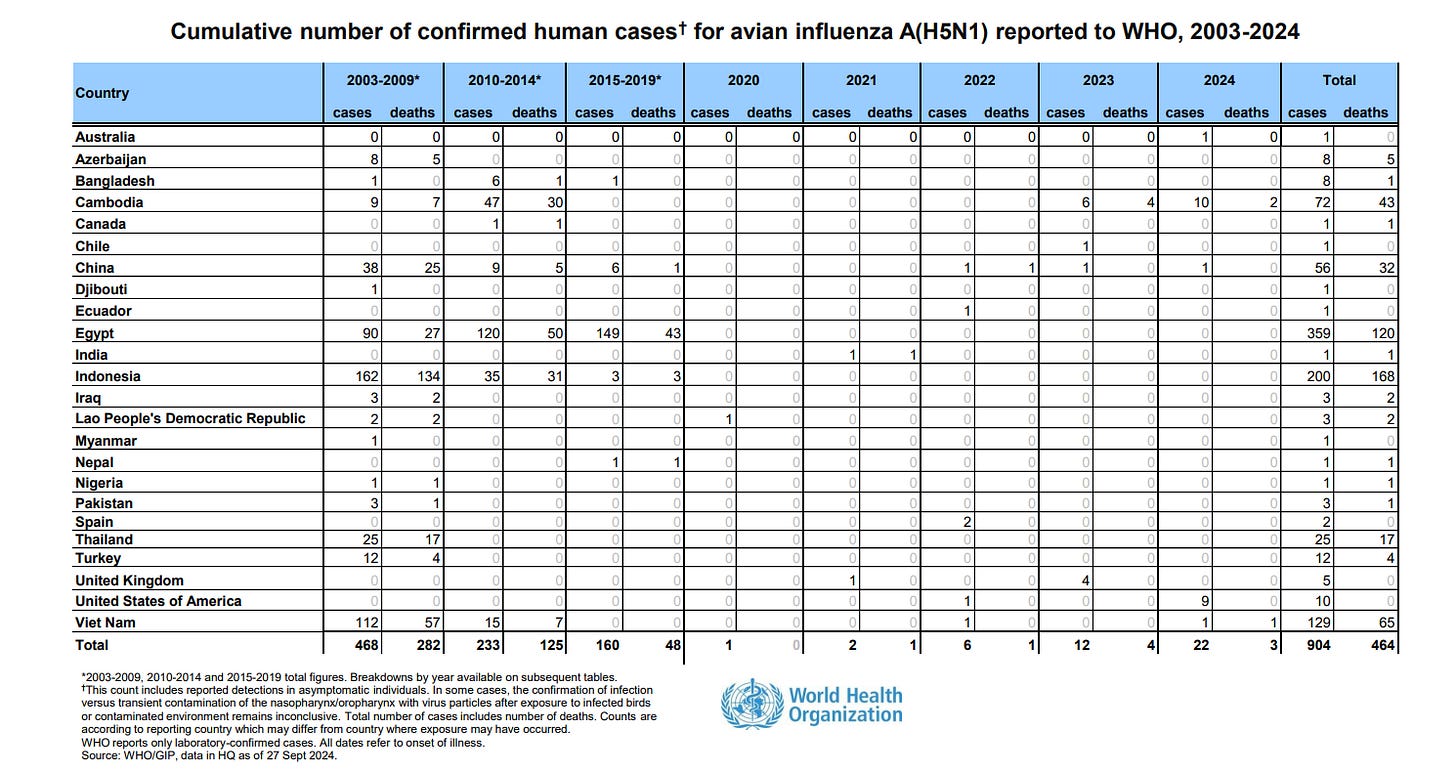How Deadly Is Bird Flu (H5N1)?
What the data says about the likelihood of dying if you catch the disease.

In the era of post-COVID uncertainty, we are all hyper-aware of infectious diseases. After one pandemic, everyone’s understandably a bit on edge about the possibility of another one. Potential new outbreaks which once would barely make the bottom pages of a newspaper are now being headlined across the world.
One of the biggest concerns at the moment is bird flu, or avian influenza to use the slightly more snooty term. There are a number of different influenza viruses that infect birds, but generally when you see a headline about bird flu at the moment it’s referring to a specific type called H5N1.
If you read the headlines, the news about bird flu is very bad. Not only are there more and more cases popping up across the world - for example just 1 case in the US in 2022 but now 66 in the last 12 months - but the virus is scarily fatal. According to the World Health Organization, of the 904 cases reported globally since 2003, a staggering 464 (51%) have been fatal.

H5N1 is not currently spreading between human beings - the main way that people get infected is by handling poultry or more recently cows - but it’s clear that the virus could mutate to start moving from person to person. If the death rate of 51% is accurate, that presents a truly terrifying vision for anyone paying attention.
But as someone who worked on understanding the COVID-19 death rate for years, I’m skeptical of that very high number. I think there are many signs that the fatality risk from bird flu is dramatically lower than the 51% you might’ve seen in the news.
Let’s look at the data.
Keep reading with a 7-day free trial
Subscribe to Gideon M-K: Health Nerd to keep reading this post and get 7 days of free access to the full post archives.

